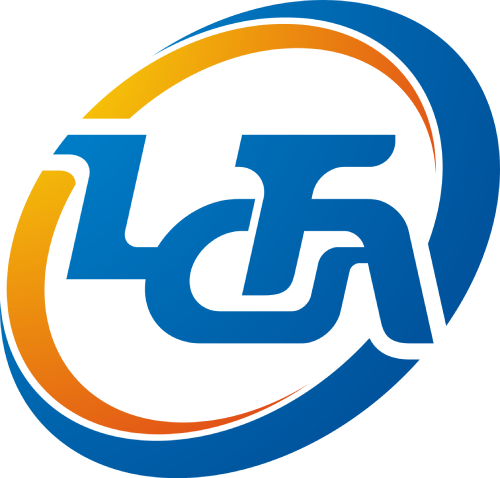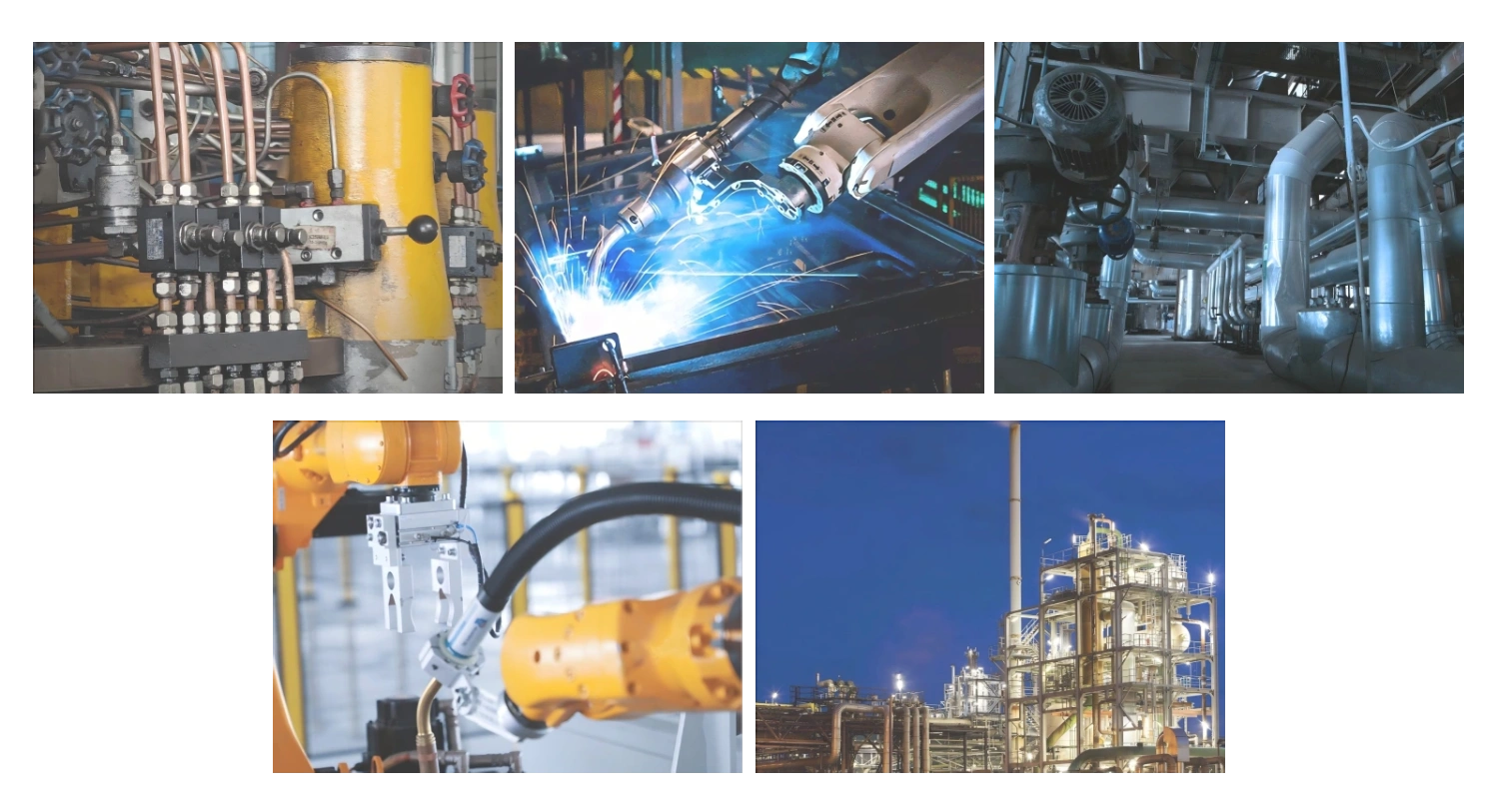Özel kalıplanmış endüstriyel kauçuk parçaların profesyonel üreticisi olarak Xingtai Longcheng Sealing Co., Ltd. (bundan sonra "Longcheng Sealing" olarak anılacaktır) otomotiv ve endüstriyel makine sistemleri için yüksek performanslı kauçuk bileşenlerin geliştirilmesine odaklanmaktadır—bu sektörlerde sıvı sızdırmazlığı, titreşim azaltma ve aşınma direnci gibi temel ihtiyaçlara çözüm sunmaktadır.
Otomotiv endüstrisinde, Longcheng Sealing'in özel ürünlerinin (EPDM kapı contaları, NBR yağ contaları ve silikon titreşim sönümleyiciler dahil) kritik bir rolü vardır: Kapı contaları, yağmur suyu ve toz girmesini engellerken rüzgar sesini azaltır (testler, standart contalara kıyasla kabin gürültüsünde %15 oranında azalma göstermektedir); motor ve şanzımanlar için yağ contaları yüksek basınçta (10 MPa'ya kadar) ve yüksek sıcaklıkta (120℃) sıfır sızıntı sağlayarak otomotiv güç aktarma sistemlerinin kullanım ömrünü %30 oranında uzatır.
İnşaat ekskavatörleri, tekstil makineleri gibi endüstriyel makineler için Longcheng Sealing'in kauçuk parçaları, zorlu çalışma koşullarına dayanacak şekilde tasarlanmıştır. Örneğin, ekskavatör kol eklemelerinde kullanılan kauçuk burçların aşınma direnci sektör standartlarının %25 üzerinde olup tozlu ve yüksek yük altında bile stabil çalışmayı sağlar. Şandong'daki bir ağır makine üreticisi, Longcheng Sealing'in bileşenlerine geçtikten sonra ekipmanlarının ortalama bakım aralığının 3 aydan 6 aya çıktığını ve bununla birlikte durma maliyetlerinin önemli ölçüde azaldığını bildirmiştir.
Kauçuk contaların sızdırmazlık performansını garanti altına almanın anahtarı hassas kesim işlemidir ve Longcheng Sealing, farklı müşteri ihtiyaçlarını karşılamak üzere mat Kesimi ve sujet Kesim karışık kesim sistemini kurmuştur.
-
Mat Kesimi : Standart conta üretimi için büyük partilerde uygun (örneğin O-ring'ler, düz contalar). Longcheng Sealing yüksek hassasiyetli çelik kalıplar (±0,02 mm tolerans) ve otomatik die-cutting hatları kullanarak günde 500.000 adede kadar üretim kapasitesi sağlar. Contaların tutarlılık oranı %99,8'e ulaşır ve bu oran özellikle otomotiv klima sistemleri ile ev aletleri su borularında yaygın olarak kullanılır.
-
Sujet Kesim : Küçük partili, karmaşık şekilli contalar için tasarlanmıştır (örneğin endüstriyel vana için düzensiz şekilli contalar). Longcheng Sealing'in 5 eksenli su jeti kesim makineleri, yüksek basınçlı su hüzmesini (basınç 400 MPa'ya kadar) ısı oluşturmadan kauçuk malzemeleri kesmek için kullanır; böylece malzeme çarpılmasını ve kenar dikenlerini önler. Jiangsu'daki bir kimyasal ekipman üreticisi için Longcheng Sealing, her birinin şekil hatası ±0,05 mm içinde tutulan 1.000 adet düzensiz PTFE-kauçuk kompozit conta setini 3 gün içinde kesimini tamamladı ve bu ekipmanın korozif ortamlarda conta gereksinimlerini tamamen karşıladı.
Longcheng Sealing'in kesme süreci, her conta kesildikten sonra boyutsal sapmaları ve kenar kusurlarını kontrol etmek için endüstriyel bir kamera ile taranmasını içeren %100 görsel muayene aşamasını da kapsar ve böylece yalnızca uygun ürünler müşterilere teslim edilir.
Longcheng Sealing ileri seviye kauçuk-metal yapıştırma teknolojisini (patent numarası: ZL2024XXXXXXX) başarıyla uygulamaktadır ve bu işlem, kauçuk ile metal arasındaki yapışma gücünün düşük olması gibi sektörün temel sorununu çözmektedir. Bu süreç üç temel adımı içerir:
-
Metal Yüzey Tedavisi : Metal yüzeylerin pürüzlülüğünü artırmak (Ra 3.2-6.3μm) ve kauçuk yapışması için "mekanik kilitlenme" temeli oluşturmak amacıyla kum püskürtme ve kimyasal aşındırma kullanılması.
-
Altyapı Katmanı : EPDM, NBR ve silikon ile uyumlu olan, hem metal hem de kauçukla kimyasal bağ oluşturan kendine özel geliştirilmiş bir yapıştırıcı uygulanması.
-
Kalıp yapıştırma : Enjeksiyon kalıplama veya basınçlı kalıplama yoluyla kauçuk ve metalin birleştirilmesi ve ≥5MPa'lık bir yapışma dayanıklılığının sağlanması (sektör standardı olan 3MPa'nın çok üzerinde).
Bu teknoloji, otomotiv amortisörlerinde ve endüstriyel makine ayaklarında yaygın olarak kullanılmaktadır. Örneğin, Longcheng Sealing'in bir yeni enerji araç üreticisi için ürettiği kauçuk-metal amortisörler, araç şasisinin titreşim genliğini %40 oranında azaltabilir ve sürüş konforunu artırırken batarya paketini titreşim hasarından korur. Yüksek sıcaklık ve düşük sıcaklık döngü testlerinde (-40℃ ila 120℃, 1.000 döngü), yapıştırma yüzeyinde soyulma belirtisi görülmemiştir ve bu da otomotiv bileşenlerinin dayanıklılık gereksinimlerini tamamen karşılamaktadır.
Longcheng Sealing, ürün özelliklerine göre sıkıştırma kalıplaması ve enjeksiyon moling teknikleri esnek bir şekilde seçer ve üretim verimliliği ile maliyet etkinliği arasında denge kurar:
Tipik bir örnek: Ağır hafif üreticisi için motor yağ karteri conta (büyük, basit şekil), Longcheng Sealing tarafından enjeksiyon kalıplamaya kıyasla kalıp geliştirme süresini 2 hafta ve kalıp maliyetini %25 azaltan basınç kalıplama yöntemi kullanılmıştır. Bir akıllı telefon üreticisinin su geçirmez contası (küçük, 3 mikro oluklu) için ise oluk yapısının doğruluğunu sağlamak ve ürünün IP68 su geçirmezlik standardını karşılamak amacıyla enjeksiyon kalıplama tercih edilmiştir.
Longcheng Sealing üretim süreçlerini otomasyon ve sıkı Üretim , verimliliği önemli ölçüde artırarak maliyetleri düşürmek üzere optimize etmiştir.
-
Tasarım Optimizasyonu : Kullanılan CAD yazılımları (SolidWorks, AutoCAD) ve sonlu elemanlar analizi (FEA) araçları ile contaların kullanım sırasında maruz kaldığı gerilme ve deformasyonların simülasyonu. Örneğin, yüksek basınçlı bir vana için conta tasarlanırken, FEA kullanılarak contanın kesit şekli optimize edilmiş ve gerilme çatlaması riski %40 oranında azaltılmış, ayrıca fiziksel prototip testlerinden 2-3 aşama tasarruf edilmiştir.
-
Otomatik üretim : Malzeme karışımından ürün ambalajlamasına kadar tüm üretim hattı otomatik ekipmanlarla donatılmıştır:
- Otomatik kauçuk karıştırma makineleri: Hammaddelerin oranını hassas bir şekilde kontrol eder (hata ±0,1%), malzeme performansının tutarlı olmasını sağlar.
- Robotik yükleme/boşaltma: Enjeksiyon kalıplama atölyelerinde robotlar kauçuk malzemelerin yüklenmesini ve bitmiş ürünlerin boşaltılmasını gerçekleştirir, iş gücü gereksinimini %60 oranında azaltır.
- Otomatik ambalaj hatları: Müşteri ihtiyaçlarına göre son ürün conta sayısı etiketlenir ve otomatik olarak paketlenir, saatte 2.000 adetlik bir paketleme verimliliği sağlar.
-
Düzenli yönetim : 5S yönetimi sistemi ve sürekli iyileştirme (Kaizen) faaliyetleri uygulanmaktadır. Örneğin, die-cutting atölyesinin yerleşiminin optimize edilmesiyle malzeme taşıma mesafesi %30 azaltılmış ve her siparişin üretim süresi %10 kısaltılmıştır.
Bu optimizasyonlar, üretim verimliliğinde %25 artışa ve ürün hata oranlarında %18 azalmaya yol açmıştır ve bu veriler üçüncü taraf bir denetim firması tarafından doğrulanmıştır.
Longcheng Sealing çevre korumayı şu şekilde uygular: kauçuk enjeksiyon makinelerini yenileyerek ve tekrar kullanarak , maliyet tasarrufu ile sürdürülebilirliği dengeler. Şirket, eski ekipmanlar için katı bir yenileme sürecini takip eden özel bir makine bakım atölyesi kurmuştur:
-
Sökme ve inceleme : Eski makineler tamamen sökülür, anahtar bileşenlerin (örneğin vida, silindir ve kalıplar) aşınması kontrol edilir ve aşırı derecede yıpranmış parçalar yenileriyle değiştirilir.
-
Teknolojik yükseltme : Eski makineler üzerine yeni kontrol sistemleri (örneğin PLC dokunmatik ekranlar) ve enerji tasarruflu motorlar monte edilerek otomasyon artırılır ve orijinal ekipmana kıyasla enerji tüketimi %20 oranında azaltılır.
-
Test ve Sertifikasyon : Yenilemeden sonra makineler, performanslarının yeni makinelerle aynı standartlara ulaştığını sağlamak amacıyla 72 saatlik sürekli çalışma testinden geçirilir.
Şu anda Longcheng Sealing'in enjeksiyon kalıplama ekipmanlarının %30'u yenilenmiş durumdadır. Bu uygulama, ekipman satın alma maliyetlerini %40 oranında düşürmenin yanı sıra endüstriyel atıkları da azaltmaktadır—her bir yenilenmiş makine, yeni alımına kıyasla 1,2 ton çelik tasarrufu sağlar. 2024 yılında Longcheng Sealing, bu girişimi nedeniyle Hebei Eyaleti Endüstri ve Bilgi Teknolojisi Departmanı tarafından "Yeşil Üretim İşletmesi" ödülüne layık görüldü.
Synaflex (büyük ölçekli özel kalıplamaya odaklanmış), Wabtec Elastomers (raylı sistem taşımacılığına uzmanlaşmış) ve Specification Rubber Products (su tesisatına adanmış) gibi üreticiler olmakla birlikte, Longcheng Sealing kendisini otomotiv ve endüstriyel makine sektörlerine odaklanarak ve malzeme seçimi ile tasarımından üretime ve satış sonrası hizmetlere kadar tüm süreci sağlayarak tek Adımda Özel Çözümler —malzeme seçimi ve tasarımdan üretime ve satış sonrası hizmete kadar—
-
Malzeme Ar-Ge yeteneği longcheng Sealing, müşteri ihtiyaçlarına göre özelleştirilmiş kauçuk formülleri geliştirebilen 10'dan fazla Ar-Ge mühendisinin çalıştığı bir malzeme laboratuvarına sahiptir. Örneğin, yeni bir enerji aracı üreticisi için laboratuvar, pil takımı contaları için yüksek sıcaklığa dayanıklı bir silikon kauçuk (sürekli kullanım sıcaklığı 200°C'ye kadar) geliştirmiştir ve bu kauçuk, performans düşüşü olmadan 1.000 saatlik yüksek sıcaklık yaşlanma testini geçmiştir.
-
Hızlı tepki yeteneği : Acil siparişler için Longcheng Sealing, kalıp geliştirme süresini 7-10 güne kadar kısaltabilir (sektör ortalaması 15-20 gündür) ve 3 gün içinde küçük parti deneme üretimi gerçekleştirebilir. Guangdong'daki bir otomotiv parça tedarikçisi bir kez acil olarak 5.000 adet fren ana merkez contası siparişi vermişti; Longcheng Sealing, kalıp geliştirme işlemini 8 günde tamamlayarak tüm ürünü 12 günde teslim etmiş ve müşterinin üretim durmasının önüne geçilmesine yardımcı olmuştur.
-
Küresel Uyumluluk sertifikasyonu longcheng Sealing'in ürünlerinin ISO 9001 kalite yönetim sistemi, IATF 16949 otomotiv endüstrisi kalite standardı ve REACH çevre koruma sertifikasyonu olmak üzere çok sayıda uluslararası sertifikası bulunmaktadır. EPDM kauçuğu AB RoHS 2.0 standardına, NBR kauçuğu ise ABD FDA'nın gıda temaslı malzeme gereksinimlerine uygundur ve bu sayede ürünler Avrupa, Kuzey Amerika ve Güneydoğu Asya'da satılabilir durumdadır.
Dünyanın en büyük 10 otomotiv üreticisinden biri, 2023 yılında motor yağ contalarının tek tedarikçisi olarak Longcheng Sealing'i seçti. İş birliği, iki temel sorunu çözme odaklıydı:
- Orijinal yağ contasında yüksek sızıntı oranı vardı (%1,5 araç, 1 yıl içinde yağ sızıntısı yaşadı).
- Orijinal tedarikçinin üretim döngüsü çok uzundu (büyük siparişler için 45 gün).
Longcheng Sealing'in sunduğu çözümler şunları içeriyordu:
- Motor yağı direncini artıran ve malzemenin motor yağındaki şişme oranını %15 artırarak (%8'den %23'e) yeni bir NBR kompozit malzeme geliştirme.
- Enjeksiyon kalıplama sürecinin optimize edilmesiyle yağ contalarının üretim kapasitesi %50 artırıldı ve teslimat döngüsü 25 güne indirildi.
Bir yıllık iş birliğinin ardından otomotiv üreticisinin motor yağ contalarındaki sızıntı oranı %0,2'ye düştü ve müşterinin satın alma maliyeti %12 azaldı. Bu vaka, Çin Kauçuk Sanayii Birliği tarafından "Otomotiv Tedarik Zinciri İş Birliği Örnek Vakası" olarak seçildi.
Malzeme sertifikasyonu ürün kalitesini garanti altına almanın temelidir ve Longcheng Sealing, müşterilerin performansı doğrulamasına yardımcı olmak için tüm kauçuk malzemeler için eksiksiz sertifika belgeleri sağlar:
Longcheng Sealing ayrıca sağlar özel malzeme test raporları müşteriler için. Örneğin, bir gıda işleme şirketi, silikon conta malzemelerinin ABD FDA gıda teması standardını karşılamasını talep etti; Longcheng Sealing, üçüncü taraf bir laboratuvar (SGS) aracılığıyla göç testi yaptırarak contanın zararlı madde içeriğinin FDA limitlerinin çok altında olduğunu kanıtladı ve böylece müşterinin siparişini almayı başardı.
Üretim makinelerinin ileri düzeyde olması, otomotiv kauçuk contalarının kalitesini doğrudan etkiler ve Longcheng Sealing bu konuda ekipmanlarını güncellemek için büyük yatırımlar yaptı:
-
Enjeksiyon kalıplama makineleri : 50T ile 500T arasında kilitleme kuvvetine sahip 20 adet ithal Sumitomo (Japonya) ve KraussMaffei (Almanya) enjeksiyon kalıp makineleri, farklı boyutlardaki contaların üretimine uygun.
-
Vulkanizasyon ekipmanı : Hassas sıcaklık ve basınç kontrolüne sahip 50 adet otomatik düz vulkanizasyon makinesi, kauçuğun homojen biçimde vulkanize edilmesini sağlar (vulkanizasyon derecesi ≥ %95).
-
Test ekipmanları : Kauçuk mukavemetini test etmek için bir çekme test cihazı, malzeme elastikiyetini test etmek için bir sıkıştırma dayanımı test cihazı ve contaların gerçek çalışma koşullarındaki sızdırmazlık performansını simüle etmek için bir sızdırmazlık test cihazı içerir.
Bu cihazlar, Longcheng Sealing'in aşağıdaki hassasiyet göstergelerine sahip otomotiv kauçuk contaları üretmesini sağlar:
- Boyutsal tolerans: ±0,03 mm
- Yüzey pürüzlülüğü: Ra ≤0,8 μm
- Sıkıştırma kalıcı deformasyonu (70 °C, 22 saat): %20'den az
Yerel bir otomotiv OEM'si, Longcheng Sealing contalarının otomotiv bileşenleriyle uyum doğruluğunun %99,5 olduğunu doğrulamıştır ve bu oran diğer tedarikçilerden %5 daha yüksektir.
Longcheng Sealing, ürünlerinin uluslararası pazara sorunsuz şekilde girebilmesi için küresel uyumluluk standartlarına tam olarak uyar.
-
Kalite Yönetimi : ISO 9001 ve IATF 16949 sistemlerini uygular; her bir ürün partisinin ham madde tedarikçilerine, üretim personeline ve test verilerine kadar izlenebilirliği sağlayan eksiksiz bir kalite izlenebilirlik sistemine sahiptir.
-
Çevre koruma : Kauçuk malzemelerde 233 farklı kısıtlı maddenin kullanımını yasaklayan AB REACH ve RoHS standartlarına uygundur.
-
Güvenlik Standartları : Patlayıcı ortamlarda kullanılan ürünler (örneğin petrol ve gaz ekipmanları) için Longcheng Sealing, ATEX sertifikası (AB) ve UL sertifikası (ABD) almıştır ve conta kullanım sırasında statik kıvılcım oluşturmayacağı garanti altına alınmıştır.
2024 yılında Longcheng Sealing, otomotiv kauçuk parçaları için ABD Ulaştırma Bakanlığı (DOT) sertifikasını geçerek Kuzey Amerika pazarına başarıyla girmiştir ve yıllık ihracat hacmi %60 artmıştır.
Longcheng Sealing, kauçuk üretimi sektöründe otomasyon konusunda öncü konumdadır ve bir akıllı Fabrika «Nesnelerin İnterneti (IoT) + veri analizi» entegrasyonunu sağlayan
-
Gerçek Zamanlı İzleme : Enjeksiyon kalıplama makinelerine ve vulkanizasyon makinelerine sensörler yerleştirilerek sıcaklık, basınç ve çevrim süresi gibi veriler gerçek zamanlı olarak toplanır. Bu veriler analiz için MES'e (Üretim Yürütme Sistemi) iletilir ve anormal parametreler otomatik alarm tetikler.
-
Yapay zeka ile kalite kontrolü : Makine görüşü ve yapay zeka algoritmalarını kullanarak ürün kusurlarını denetler. Yapay zeka sistemi, kabarcıklar, çatlaklar ve boyutsal sapmalar gibi 10'dan fazla kusur türünü %99,2 doğruluk oranı ile belirleyebilir ve bu, elle muayeneden 3 kat daha verimlidir.
-
Akıllı planlama : ERP sistemi, sipariş önceliğine ve ekipman yüküne göre üretim görevlerini otomatik olarak planlar ve sipariş teslim süresini %20 oranında kısaltır.
Akıllı fabrika işletime alındıktan sonra Longcheng Sealing'in üretim verimliliği %35 arttı ve ürün hata oranı %2'den %0,5'e düştü.
Longcheng Sealing, atığı azaltmak ve çevresel etkiyi en aza indirmek için bir kapalı döngülü kauçuk geri dönüşüm sistemi geliştirdi:
-
Atık toplama : Üretim sırasında atık kauçukları (örneğin kenar kesinti artıkları, uygun olmayan ürünler) toplar ve malzeme türüne göre (EPDM, NBR, silikon) sınıflandırır.
-
Öğütme ve geri kazanım : Atık kauçuğu kırıntı haline getirmek (tanecik boyutu 1-3 mm) için düşük sıcaklıkta öğütme süreci kullanır, ardından bunu ham kauçukla (oran 1:5) karıştırarak düşük talep gören ürünler üretir (örneğin endüstriyel zeminler için kauçuk pedler).
-
Enerji geri kazanımı : Geri kazanılamayan atık kauçuk, fabrikanın ısıtma sistemi için ısı elde etmek üzere profesyonel bir enerji geri kazanım tesisiye gönderilir ve bu sayede doğal gaz tüketimi %10 oranında azalır.
2024 yılında Longcheng Sealing, 500 ton atık kauçuk geri kazandırarak 800 tonluk karbon emisyonu azalttı ve "Hebei Eyaleti Döngüsel Ekonomi Örnek İşletmesi" ödülünü kazandı.
Otomotiv (yeni nesil enerji araçları pilleri), havacılık ve elektronik endüstrilerinde yüksek sıcaklığa dayanıklı kauçuk talebinin artmasına yanıt olarak, Longcheng Sealing serisi yüksek Sıcaklık Dirençli Bileşimler :
-
Silikon bazlı bileşikler : Sürekli kullanım sıcaklığı 200℃'ye kadar, kısa süreli kullanım sıcaklığı 250℃'ye kadar, yeni enerjili araç batarya paketi contaları ve uçak motoru conta plakaları için uygundur.
-
FKM (fluorokauçuk) bileşikleri : 280℃'ye kadar sıcaklıklara ve korozif ortamlara (sülfürik asit, hidrolik yağı gibi) dayanıklıdır, petrol ve gaz sondaj ekipmanlarında ve kimyasal reaktörlerde kullanılır.
Longcheng Sealing'in FKM bileşikleri Çin Bilimler Akademisi'nin yüksek sıcaklık yaşlanma testini geçmiştir: 280℃'de 1.000 saat boyunca işlem görmenin ardından çekme mukavemeti koruma oranı %85 ve kopma uzaması koruma oranı %80'tir ve uluslararası ileri seviyeye ulaşmıştır. Yerli bir havacılık ve uzay kuruluşu, uçak yardımcı güç üniteleri (APU) için FKM contaların tek tedarikçisi olarak Longcheng Sealing'i belirlemiştir.
- Özel Kalıplanmış Endüstriyel Kauçuk Bileşenlerin İncelikleri (Xingtai Longcheng Sealing'in Temel Uzmanlığı)
- Otomotiv ve Makine Sistemlerinde Uygulamalar
- Düzenli Sigilasyon için GAZYapı Kesimi
- Dayanıklı Parçaların GAZYapı-Metal Bağlama Rolü
- Endüstriyel Kauçuk Üretiminde Temel Süreçler (Longcheng Sealing'in Teknolojik Avantajları)
- Sıkıştırma ile Enjeksiyon Kalıbı Teknikleri
- Lastik Yastık Üretim Akışlarını Optimizasyon
- Çevrecilik Amaçlı Lastik Enjeksiyon Makinelerini Yeniden Kullanma
- Endüstriyel Kauçuk Parçaların Önde Gelen Üreticileri: Xingtai Longcheng Sealing'in Rekabet Avantajı
- Kaliteli Kauçuk Bileşen Tedarikçilerinin Seçimi (Neden Longcheng Sealing'i Tercih Etmelisiniz?)
- Malzeme Sertifikalarını Değerlendirme (EPDM, NBR, Silicone)
- Otomotiv Lastik Yuvası İçin Makine Yetenekleri
- Sanayi Uygulamaları için Küresel Uyumluluk Standartları
- Kauçuk Üretimini Şekillendiren Sektör Trendleri (Longcheng Sealing'in İleriye Dönük Stratejisi)
- Şablonlu Lastik Üretiminde Otomasyonun Benimsenmesi
- Gomü Geri Dönüşümünde Sürdürülebilir Uygulamalar
- Yüksek Sıcaklığa Dayanıklı Bileşenler İçin Talep







